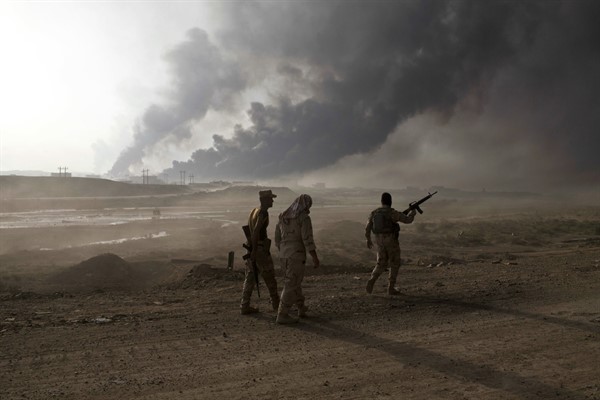Competition over scarce natural resources is often a key driver of the tensions that fuel armed conflict in different corners of the world. Yet in the heat of battle, environmental considerations are often relegated to afterthoughts, as smoke from burning buildings clouds the skies and toxic byproducts of munitions poison the soil and groundwater. As former United Nations Secretary-General Ban Ki-moon said in 2014, “The environment has long been a silent casualty of war and armed conflict.”
Conflict-related environmental damage directly and indirectly affects the wellbeing of nearby civilians by threatening their health, ecosystems, livelihoods and economies. Accordingly, humanitarian organizations and experts are increasingly recognizing the need to address the environmental dimensions of conflicts—not just among nations, but among nonstate armed groups, as well.
With militant organizations more and more active around the world, the issue is more urgent than ever. According to a 2018 study by the International Committee of the Red Cross, the number of internal conflicts that involve one or more nonstate actors has more than doubled since the start of the 21st century, and more armed groups emerged in the six years between 2012 and 2018 than over the previous six decades.

